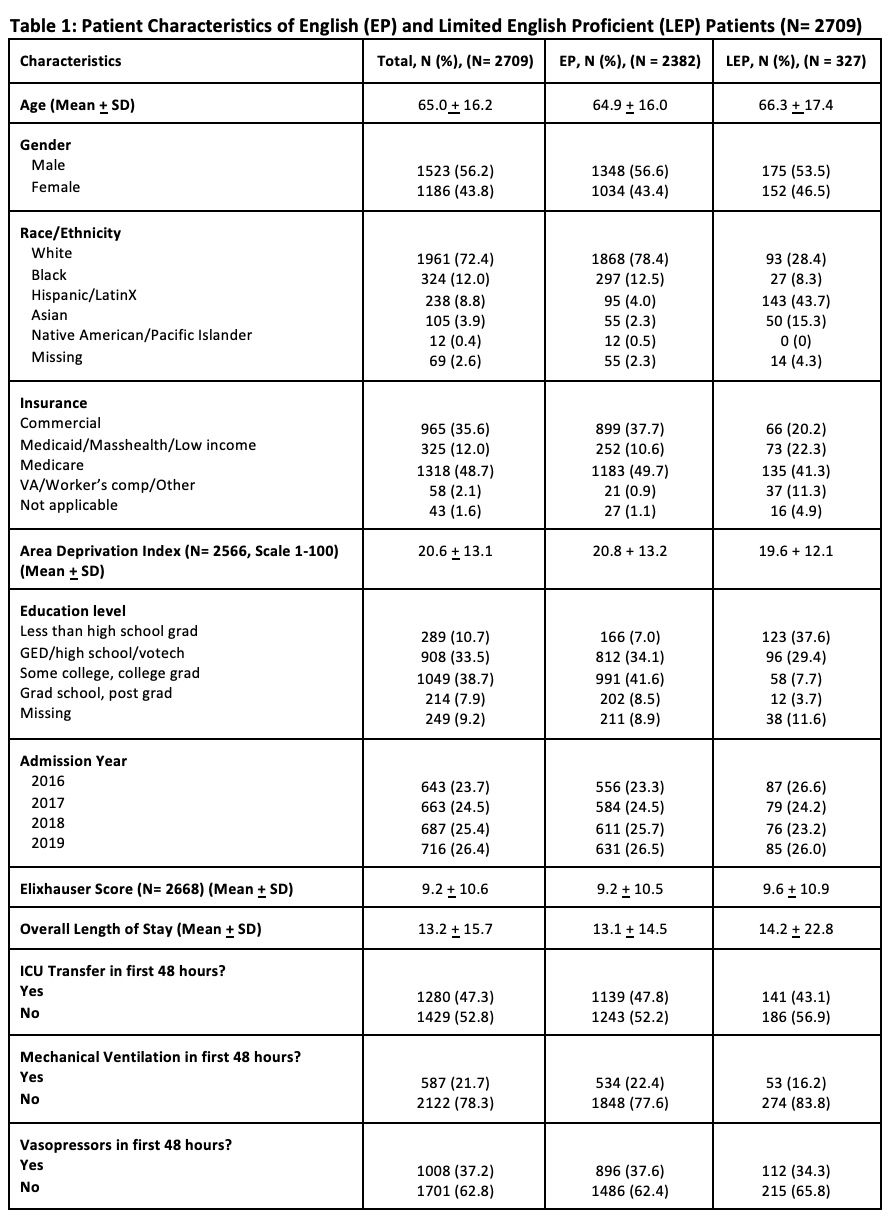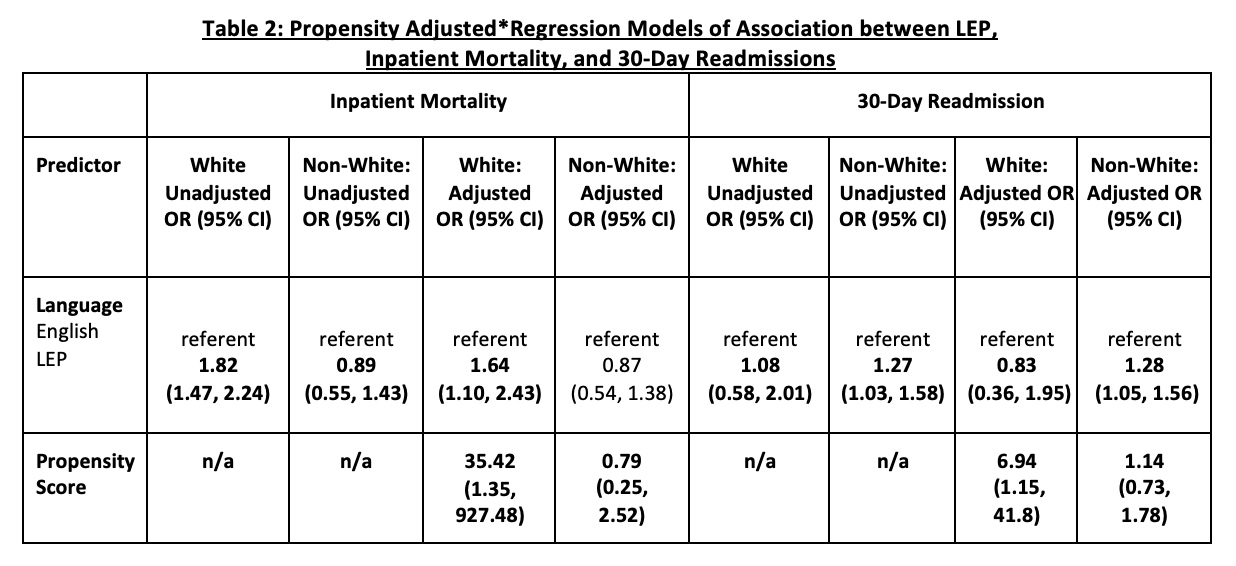Background: Patients with Limited English Proficiency (LEP) face multiple barriers to care and are at risk for worse health outcomes compared to similar patients with English Proficiency (EP). In sepsis, a common diagnosis and major cause of mortality in the US, the association of LEP with health outcomes has not been widely explored. We aimed to assess the association of LEP with inpatient mortality and 30-day readmission for patients with sepsis.
Methods: We conducted a retrospective cohort study of patients meeting Centers for Disease Control and Prevention sepsis criteria who were admitted to Brigham and Women’s Hospital from January 1, 2016, to December 31, 2019. This time period was selected in order to capture data after the new national sepsis quality measures had been put in place in 2015, and before the start of the COVID-19 pandemic. We collected data on our primary and secondary outcomes along with multiple covariates, selected a priori. We analyzed the association between LEP and our outcomes using odds ratios and conducted adjusted analyses with propensity score and ANCOVA models.
Results: Among 2709 sepsis patients, there was no significant difference in the unadjusted odds of inpatient mortality in LEP vs. EP patients. However, when stratified by race, the odds of inpatient mortality for LEP patients were significantly higher in the white sub-group (OR 1.82, 95% CI 1.47-2.24). This significant difference was present in adjusted analyses as well, accounting for age, gender, socioeconomic status and severity of illness (aOR 1.64, 95% CI 1.10, 2.43). No significant differences were found for LEP vs. English-proficient patients for inpatient mortality in the non-white group. There were no significant differences in the unadjusted odds of 30-day readmission for LEP vs. EP patients. When stratified by race, the odds of readmission were significantly higher for LEP patients in the non-white sub-group (OR 1.27, 95% CI 1.03, 1.58). This significant difference was present in adjusted analyses as well (aOR 1.28, 95% CI 1.05, 1.56).
Conclusions: For the white sub-group in our patient population (N=1961, 72.4%), the odds of inpatient mortality from sepsis were significantly higher in LEP patients. For the non-white subgroup who lived at least 30 days after first sepsis admission (n=421/1465, 28.7%), the odds of readmission within 30 days were significant higher in LEP patients. Additional studies are needed to understand why these disparities exist, how it exists in different hospital serving different demographics and communities, and ways to address them. Importantly, this highlights a need for improved care models for patients with LEP of all races to ensure more equitable outcomes.


